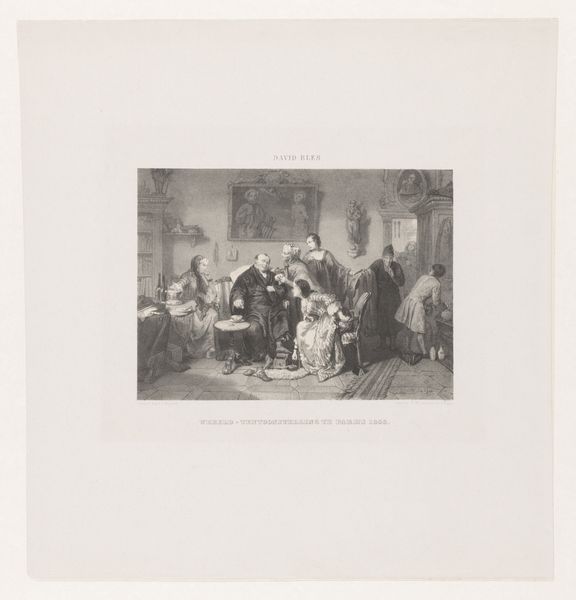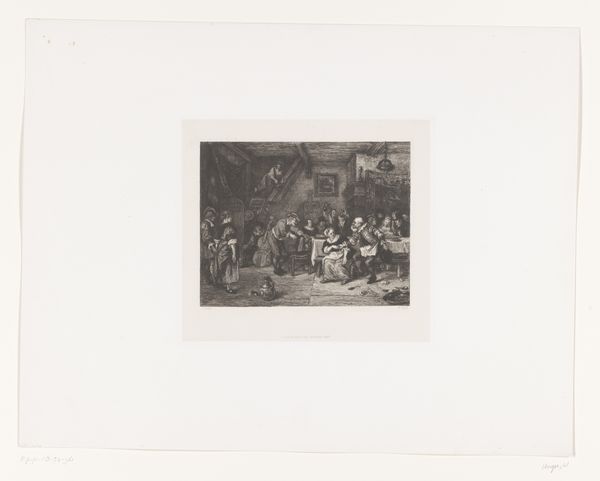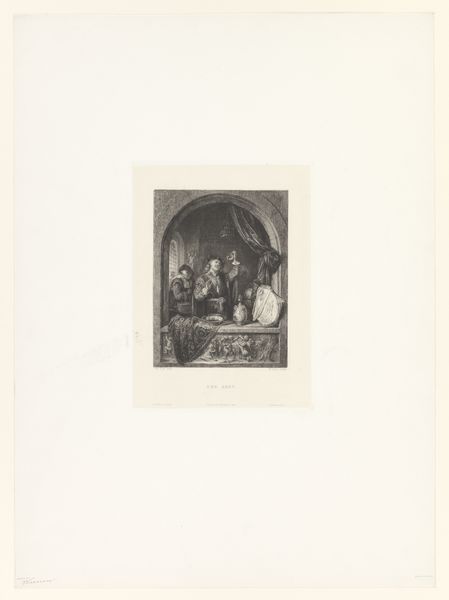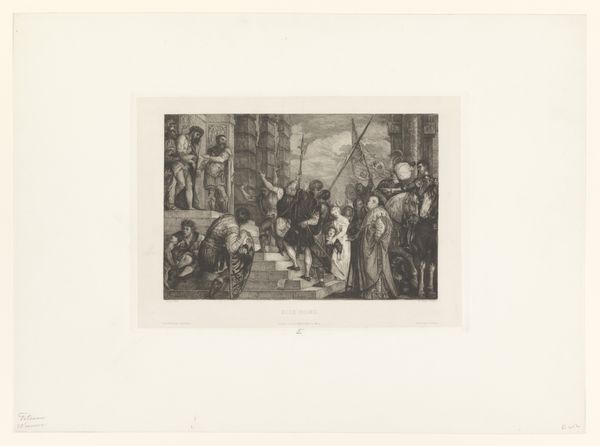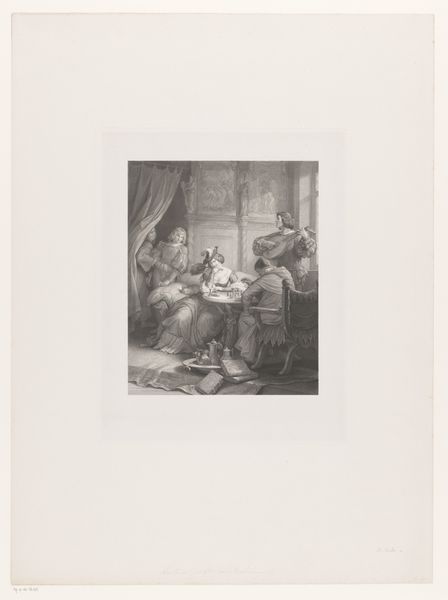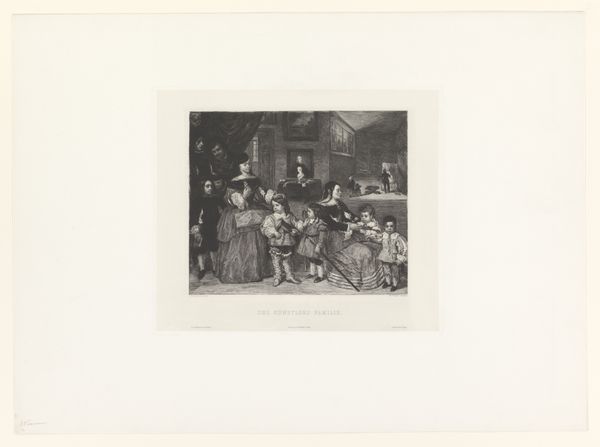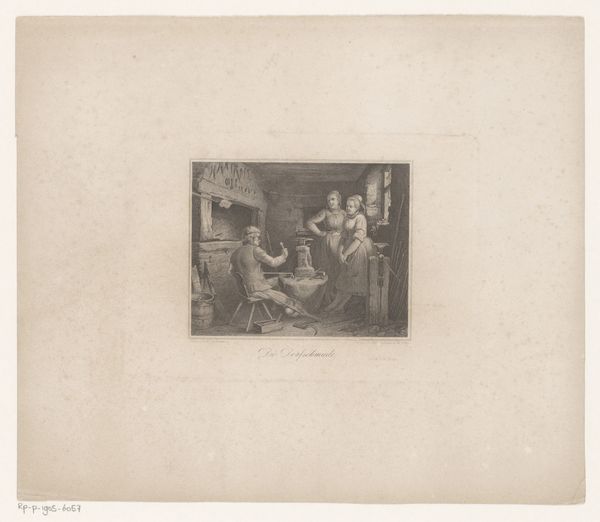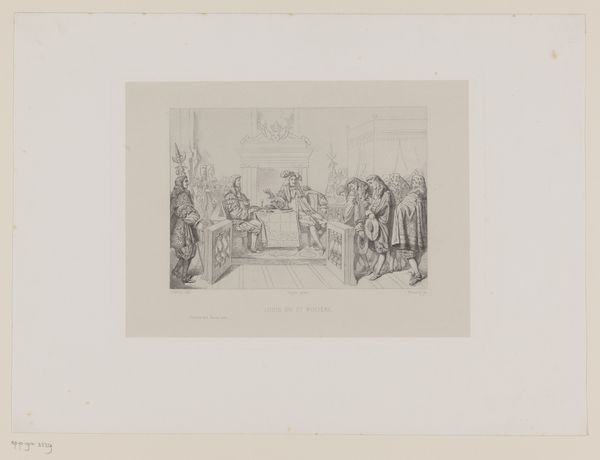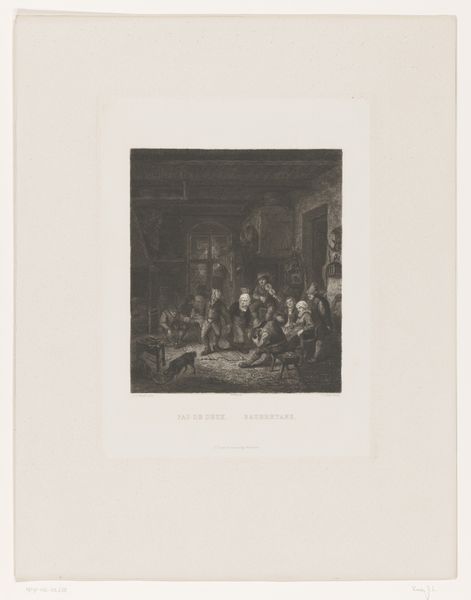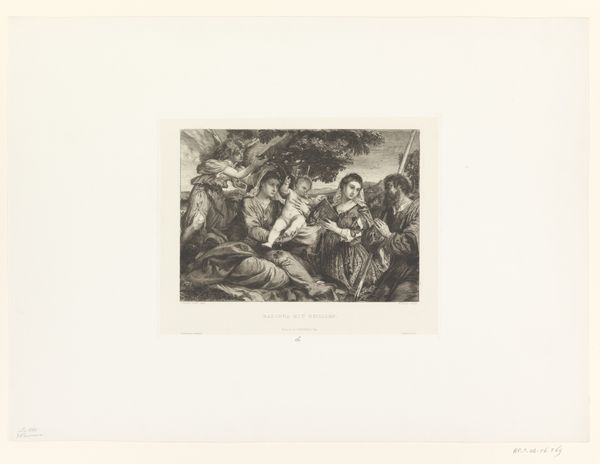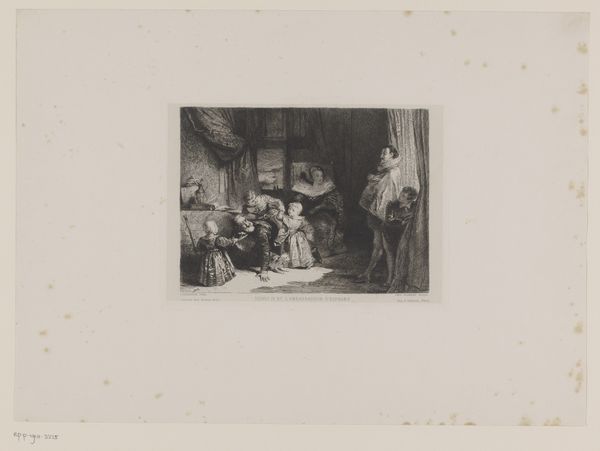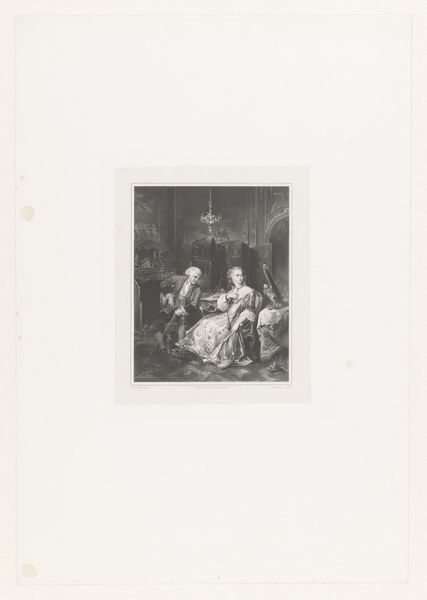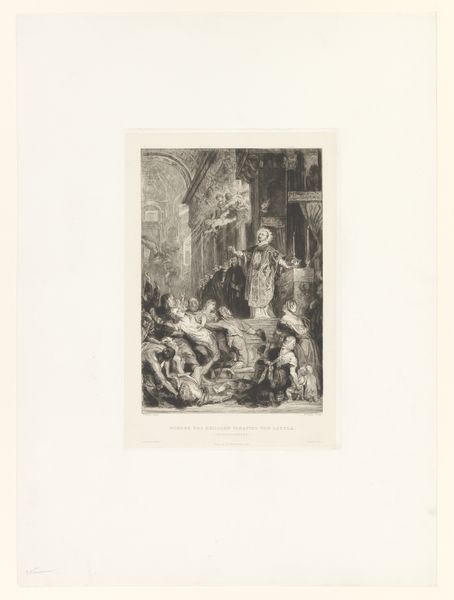
print, engraving
# print
#
old engraving style
#
genre-painting
#
engraving
#
realism
Dimensions: height 238 mm, width 308 mm
Copyright: Rijks Museum: Open Domain
Editor: So, this is "Vrolijk gezelschap," or "Happy Company," an engraving by William Unger, made sometime between 1861 and 1889. There's a domestic scene, a gathering of people... it seems kind of chaotic, almost like a snapshot of a bustling moment. What do you see in this piece that might not be immediately obvious? Curator: This print gives us a glimpse into the complex social dynamics of the 19th century. The "happy company" isn't just about joy; it reflects the prescribed roles and interactions within a particular social stratum. Notice the clear distinction between genders and ages, how each figure is positioned and relates to one another. What power dynamics do you think are at play here? Editor: I hadn't considered that! I guess the way the older figures are positioned, almost surrounding the central woman with a child, suggests a form of authority or expectation. But I'm not sure I can quite read them. Curator: Exactly. This piece invites us to question who is allowed to participate in this "happy company" and on what terms. What does it mean to create an artwork presenting social structures of gender and generation? Is it a critique, a celebration, or something more complicated? Consider, for example, how access to public life would have been so incredibly gendered in this era. Editor: I see what you mean. Looking at it that way makes it feel less like a simple genre scene and more like a staged commentary. Almost like a Victorian photograph trying to impose its vision on reality. Curator: Precisely! And who gets to shape that reality? Remember, art never exists in a vacuum. By analyzing the social context, we can decode hidden messages and gain a deeper understanding of its relationship with Victorian society. Editor: This has really opened my eyes to seeing beyond the surface of what I initially perceived as just a cozy domestic scene! It makes me wonder what other subtle critiques are hidden within similar works of this era. Curator: Indeed. It challenges us to actively engage with art, considering not just what is presented, but who is represented and why. We can use that to challenge contemporary social issues today.
Comments
No comments
Be the first to comment and join the conversation on the ultimate creative platform.
